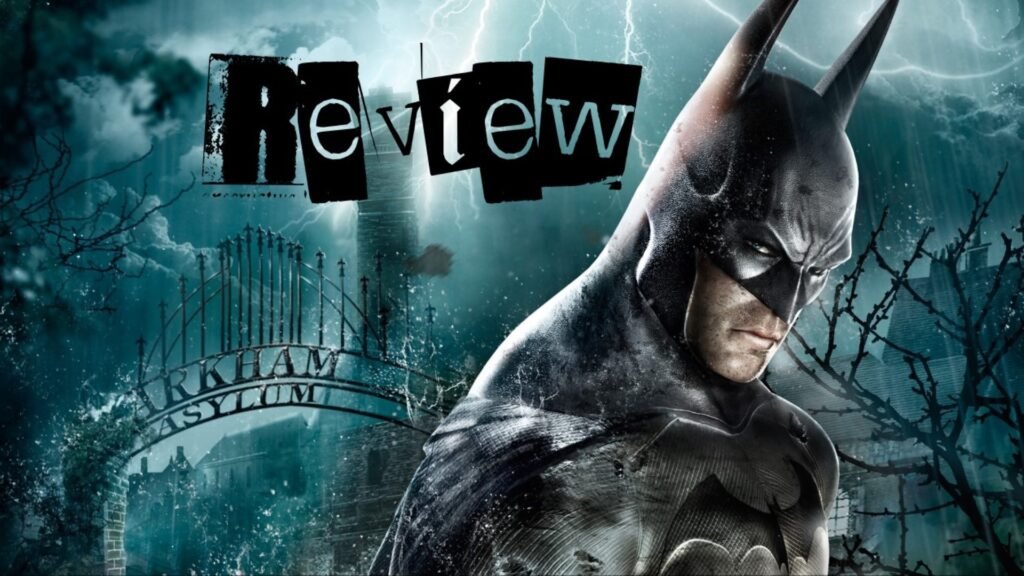
Few superheroes are as universally recognized and iconic as Batman. Since technology advanced enough to render the pixels and colors needed to depict Gotham City’s masked vigilante taking down street thugs, there has been no shortage of Batman games, movies, and animated series. However, very few media properties—especially movies and video games—have truly captured the essence of what it’s like to be the iconic superhero.
With the recent success of The Batman, starring Robert Pattinson, now seemed like the perfect time to revisit one of the greatest Batman games of all time. I’m, of course, talking about Rocksteady’s Batman: Arkham Asylum, a game so impactful that it continues to serve as a benchmark for the best superhero games today. But after almost 13 years, has the game aged well? Let’s find out.
As mentioned earlier, Batman has appeared in video games for nearly three decades. However, few of those games have made players feel like the true superhero. This is mostly due to the oversaturation of Batman-related content, with many games simply cashing in on the character’s popularity, often lacking substance.
Even leading up to Batman: Arkham Asylum’s release, many fans were understandably skeptical. After all, Rocksteady was an unproven developer at the time, and previous AAA releases like Batman Begins and Batman: Rise of Sin Tzu had received lukewarm critical and commercial reception. Unlike those games, which often felt like forced cash grabs or movie tie-ins, Arkham Asylum presented an original story inspired by DC Comics.
Rocksteady wanted to create a narrative that would appeal to both diehard Batman fans and those who weren’t typically interested in comic books. To achieve this, they worked closely with writer Paul Dini, who had written Batman comics before, to craft the perfect storyline for the game. The gloomy, foreboding atmosphere of Arkham Asylum was the perfect backdrop. And because games generally have a longer runtime than traditional movies, including multiple villains was essential to maintaining a satisfying and engaging narrative.
What better setting than Arkham Asylum, home to many of Batman’s most notorious foes? The plot of Arkham Asylum revolves around Batman’s clash with his arch-nemesis, the Joker, who plans to trap Batman in the asylum while simultaneously setting off bombs throughout Gotham City. Unlike the bright, colorful worlds of many other superheroes, Batman’s universe is grim, dark, and complex, shaped by past trauma and morally ambiguous characters. This noir tone is an ideal fit for Gotham City, a constantly crumbling urban jungle.
Depicting these characters and the world they inhabit is a significant challenge that few media properties—aside from the comics—have fully embraced. But Rocksteady nailed it, bringing Batman, the Joker, Harley Quinn, and the other characters to life in a way few other adaptations have. A big part of this success is the freedom Rocksteady had to tell its own story, without the constraints of a pre-existing movie plot. This allowed for deeper exploration of Batman’s world and gave the supporting cast ample time to shine, thanks in no small part to the excellent voice performances from the cast of the animated series.
Once Rocksteady cracked the narrative puzzle of a great Batman game, they had to deliver on the gameplay that would truly make players feel like the Dark Knight. Batman is known for his detective skills, acrobatic combat, and high-tech gadgets, and many previous games struggled to capture one or more of these aspects. But Arkham Asylum managed to create a balanced, well-rounded experience that, in all honesty, makes you feel like Batman.
The combat in Batman: Arkham Asylum is designed around flow, with players encouraged to take down entire groups of thugs using fluid, flashy combos. These animations seamlessly blend together, which is a big reason why the combat system still holds up so well today. One developer reportedly spent nearly two years working just on the animations for Batman’s cape.

The game also features generous windows for countering enemy attacks, and switching between multiple targets is effortless. This makes the combat feel intuitive and satisfying, allowing players to take down enemies with smooth, time-sensitive button presses. Fun fact: the combat system in Arkham Asylum actually started life as a rhythm game, where players had to press buttons in time with the beat to defeat their foes.
This eventually evolved into a 2D minigame before ultimately becoming the combat system we know and love today.
Batman isn’t the kind of superhero who’s always in the thick of battle. He is a symbol of fear, using the shadows to his advantage. He lures enemies into the dark before striking, taking out his foes in one swift move, culling the herd, and instilling fear in their hearts.
To aid in this process, Batman has a wide range of gadgets at his disposal, such as the trusty batarang, explosive gel, and grapple gun, among others. Most encounters begin with the player hiding from the enemy’s line of sight, using these tools of espionage to thin out enemy groups. You can grapple to strategically placed vantage points, crawl through vents to find openings, or even apply explosive gel to walls and detonate it when enemies get too close. Alternatively, you can stun enemies with a batarang, then swoop down from the sky to land a quick kick before disappearing back into the shadows.
Essentially, you have a wealth of options at your disposal, making each encounter a chance for player expression at its best.
And who could forget the iconic Detective Vision? This overlay highlights important environmental details, interactive objects, and even reveals enemy positions through walls, making it an invaluable asset for sneaking around. However, it’s easy to fall into a repetitive pattern, using the same set of tools in predictable ways, which can lead to some monotony. Unfortunately, Batman: Arkham Asylum doesn’t do much to sidestep this issue, a common problem in modern stealth game design.
In the age of Metal Gear Solid V: The Phantom Pain and other advanced stealth titles, it can feel somewhat jarring to return to the more primitive mechanics of Arkham Asylum. That said, the system remains perfectly functional, and first-time players will likely finish the game before the combat or stealth sections begin to feel tedious.
Then there’s the exploration aspect of Batman: Arkham Asylum. Rocksteady’s decision to confine the game to the four walls of Arkham Asylum means that players will often revisit the same corridors. This could have felt stale, but Rocksteady’s choice of interconnected level design was pure genius. It allowed the developers to craft an immersive, interconnected space while maintaining an impressive level of detail in the environment.
Moreover, Batman is perhaps more suited to the tight, claustrophobic corridors of the asylum, where his enemies feel just as trapped as he does, as opposed to the expansive skylines that would define later entries in the franchise.
The linearity of the game also allows developers to maintain control over pacing. Despite the inherent restrictions of a continuous space, Rocksteady manages to introduce variety, especially in the boss arenas. Each villain has a distinct domain: Scarecrow’s nightmarish sequences are markedly different from Poison Ivy’s overgrown botanical garden or Killer Croc’s subterranean lair.
Speaking of villains, Rocksteady handpicked some of the best from Batman’s expansive rogues’ gallery. At the center of it all is the Joker, who wants nothing more than to face Batman in a battle of wits, simply for the sake of it. Then there’s the Riddler, who assists the Joker to prove his superiority to the world’s greatest detective. Other iconic foes like Scarecrow, Poison Ivy, and Killer Croc also have personal grudges against Batman, which is why they join forces with the Joker in his sinister plot to bring down the Dark Knight.
Each of these bosses has unique mechanics, and unsurprisingly, they’re all a joy to fight—still exciting to revisit even today.
In conclusion, Batman: Arkham Asylum remains an absolute joy to play, even 13 years after its release. Rocksteady brilliantly captured the complex persona of Gotham’s greatest detective and his arch-nemesis, with masterful writing and a memorable cast that brought these characters to life. The combo-heavy gameplay and stealth mechanics are just as enjoyable and functional as they were at launch.
Rocksteady’s selection of Batman’s villains is among the finest to date, with each boss featuring a diverse level layout and gameplay mechanics tailored to their individual character. Batman: Arkham Asylum didn’t just kickstart one of the most successful Batman video game franchises of all time—it also cemented Rocksteady as one of the industry’s top developers.
Batman: Arkham Asylum wasn’t just a great Batman game. It was, and still remains, a benchmark for AAA superhero games. More recent titles, such as Insomniac’s Spider-Man, owe a significant part of their identity to the groundwork Rocksteady laid back in 2009.